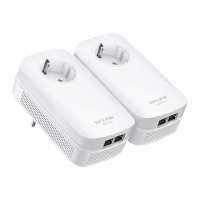Skip to content
Manuals+
User Manuals Simplified.
tp-link Gigabit Powerline Adapter User Guide
Home » Ptp-Link » tp-link Gigabit Powerline Adapter User Guide
User Guide
AV1000 Gigabit Powerline Adapter
Contents [ hide
1 About This Guide
2 Get to Know Your Powerline Adapter
2.1 Product Overview
2.2 Product Appearance
2.2.1 LED Indicators
2.2.2 Physical Interface
3 Use Your Powerline Adapter
3.1 Before You Start
3.2 Extend Your Wired Network by Plug & Play
3.3 Secure Your Powerline Network by Pairing
3.4 Add Another Powerline Adapter
3.5 Manage Your Powerline Network via tpPLC
Utility
4 FAQ (Frequently Asked Questions)
5 File Downloads
6 References
7 Related Manuals
About This Guide
This guide is a complement to the Quick Installation Guide. The Quick Installation Guide provides instructions for quick internet setup, while this
guide contains details of each function and demonstrates how to configure them in typical scenarios. When using this guide, please notice that
features of the powerline adapter may vary slightly depending on the model and software version you have. The powerline adapter availability may
also vary by region or ISP. All images, steps, and descriptions in this guide are only examples and may not reflect your actual powerline adapter
experience.
*Compatible with all HomePlug AV and AV2 Standard Powerline adapters. This product may not be compatible with routers or gateways with
firmware that has been altered, is based on open source programs, or are non-standard or outdated.
*Maximum wireless signal rates are the physical rates derived from IEEE Standard 802.11 specifications. Actual wireless data throughput and
wireless coverage are not guaranteed and will vary as a result of network conditions, client limitations, and environmental factors, including building
materials, obstacles, volume and density of traffic, and client location.
*Maximum Powerline signal rates are the physical rates derived from HomeplugAV/AV2 specifications. Actual Powerline data throughput and
Powerline range are not guaranteed and will vary as a result of network conditions and environmental factors, including electrical interference,
volume of traffic and network overhead, AFCI circuit breaker, and Powerline being located in a separate circuit.

